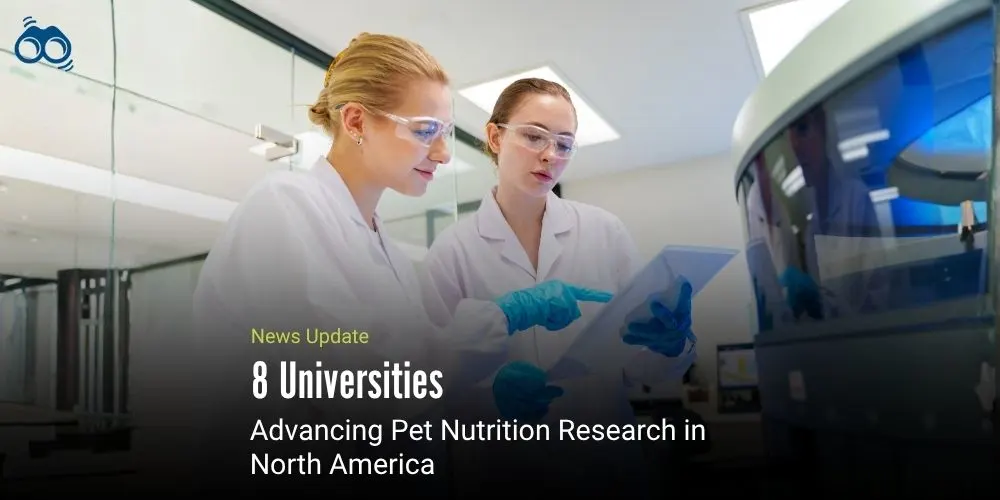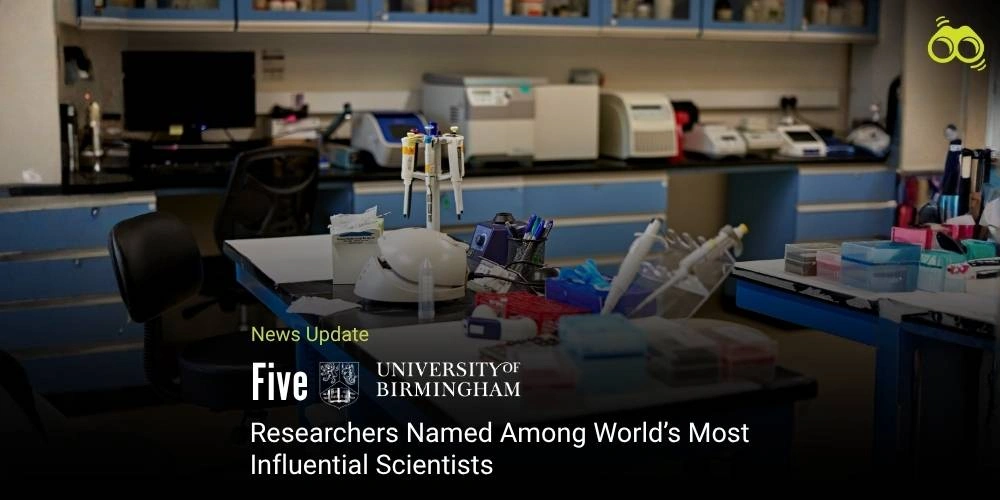Academic Excellence Drives Pet Food Innovation Across U.S. and Canadian Universities
Eight Institutions Advance Dog and Cat Nutrition Through Applied Research and Industry Collaboration
The North American pet food industry continues to tap into the research of some of the world's foremost universities on animal nutrition and food innovation. Eight schools in the United States and Canada, including Kansas State University, Texas A&M University, the University of Guelph, Auburn University, North Carolina State University, Purdue University, the University of Nebraska-Lincoln, and the University of Illinois Urbana-Champaign, have formed strong academic footing on the science of dog and cat nutrition to build up the future of animal nutrition programmes in North America.
K-State has been a leader in pet food science since 2011 because of its major Pet Food Programme. Under the leadership of Dr Julia Guazzelli Pezzali, the programme investigates processing procedures such as extrusion, baking, canning, and sensory analysis. The university's modern facilities, the Extrusion Lab and O.H. Kruse Feed Technology Innovation Centre, are used for practical training and applied research. All of this in turn directly links academia to the industry, with an annual Pet Food Collab event and specialised workshops discussing current topics such as ingredient approval, sustainability, and AI in pet food technology and innovation.
Meanwhile, Texas A&M University (also TAMU) is involved in research on pet nutrition through strong animal science and food technology programmes. While no dedicated degree in pet food exists at the university, the TEES EDGE continuing education programme has provided information on extrusion, process optimisation and food safety. Hybrid and short-course offerings at TAMU on extruded pet foods and treats have attracted the interest of practitioners and students looking for an applied skill set in feed manufacturing and product development, thus emphasising universities' contribution to innovation in pet food.
Making their way to Canada, Guelph has established itself as an old-time leader in dog and cat nutrition science. Projects at the university led by Professors Anna Kate Shoveller and Adronie Verbrugghe, who both hold industry-supported research chairs at Champion Petfoods and Royal Canin, are focused on protein quality, dietary interventions and obesity management in pets. With great collaborations, including Hill's Pet Nutrition, the university institution partners efficiently with the industry for the scientific findings to see application in practice. At the same time, Auburn offers broad programmes in animal sciences and poultry that cover the needs of both veterinary and animal feed research sectors.
It's Charles C. Miller Jr. Poultry Research and Education Centre gives students hands-on experience in feed milling, meat processing, and nutrition research. Graduates from Auburn, whose training and skills are mostly in poultry and animal sciences, thus form very good assets to pet food companies, being fondly regarded as such. Furthermore, myriads of efforts have been undertaken by North Carolina State University (NC State) in establishing itself as the in North America in animal nutrition in its feed milling and animal science curricula.
At The Feed Mill Education Unit, which models a commercial feed facility, students learn about precision manufacturing and product safety. The institution engages in microbiome research and ingredient approval trials, often extending into dog-and-cat food formulas; using applied research, it seeks to propel pet food science even further. On a different level of engagement, Purdue University in Indiana offers both Animal Science and Food Science degrees, with students having the option to minor in pet food processing.
The programme includes a range of required courses: from companion animal management through applied nutrition to food microbiology. Situated in proximity, with its modern pilot-scale facilities alongside sensory-evaluation laboratories, Purdue offers students a hands-on introduction to pet-food technology and innovation. Meanwhile, the University of Nebraska–Lincoln has introduced a Food Technology for Companion Animals programme, which combines animal science with food processing.
Its Food Processing Centre, which supports research and development in high-pressure processing, freeze drying, and extrusion capabilities, makes Nebraska a prime mover in pet-food innovation in US universities, facilitating small-scale production and product testing for both academic and industry-based goals. The University of Illinois at Urbana-Champaign has spearheaded pet nutrition research since 1974, focusing on sustainable ingredients, food safety, and therapeutic nutrition. Supporting its studies is the Feed Technology Centre and pilot-scale processing in extrusion, coating, and ingredient analysis.
It also offers a certification in companion animal nutrition to meet the growing demand for structured learning in the pet food science and technology vertical. In totality, they cover up the backbone of pet food science and innovation in North America. Those universities provide a hub of academic excellence, the industrial commercial outlook and the state-of-the-art facilities aimed at strengthening mankind's understanding of dog and cat nutrition, further training the next crop of experts for the future of the world pet food industry.
Editor's Note:
The enhanced collaboration between universities in North America and the pet food industry is a welcome occurrence, depicting a move toward evidence-based innovation in animal nutrition. While enhancing the science behind dog and cat nutrition, institutions including Kansas State, Guelph, and Illinois have developed strong connections between academic research and commercial application. That partnership is the very one that guarantees scientific rigour meets real-world application. What shines is the diversity of expertise across these different universities, from extrusion and feed milling to microbiome research and therapeutic nutrition. These programmes do not just groom students; they are moulding the future of pet food with sustainability, safety, and technology as intrinsic components in all phases of development. Industry-funded research chairs and pilot-scale facilities further substantiate the claim that academia is an innovation leader in this field.
Skoobuzz underlines that in an arena typically dominated by marketing claims, the scientific input of the university to such evidence for pet food development is not just welcome, it is indispensable. The contributions made by these universities deserve even more substantial recognition, not only for their input to animal health but also to help in training the next generation of professionals poised to lead the industry onwards.
FAQs
1. Which universities are leading pet food science research in North America?
Eight universities in the United States and Canada are at the forefront of pet food science and innovation:
Kansas State University
Texas A&M University
University of Guelph
Auburn University
North Carolina State University
Purdue University
University of Nebraska–Lincoln
University of Illinois Urbana-Champaign
These institutions are shaping the future of dog and cat nutrition through academic research, industry collaboration, and hands-on training.
2. What makes Kansas State University a leader in pet food science?
Kansas State University has led the field since 2011 through its dedicated Pet Food Program. Under Dr Julia Guazzelli Pezzali, the programme explores extrusion, baking, canning, and sensory analysis. Its Extrusion Lab and O.H. Kruse Feed Technology Innovation Centre support applied research and industry engagement, including the annual Pet Food Collab event and workshops on sustainability, ingredient approval, and AI in pet food technology.
3. How is Texas A&M University contributing to pet food innovation?
Texas A&M University supports pet nutrition research through its animal science and food technology programmes. While it does not offer a dedicated pet food degree, its TEES EDGE continuing education courses cover extrusion, process optimisation, and food safety. These hybrid and short courses attract professionals and students seeking practical skills in feed manufacturing.
4. What role does the University of Guelph play in pet nutrition research?
The University of Guelph is a long-standing leader in dog and cat nutrition science. Professors Anna Kate Shoveller and Adronie Verbrugghe lead research on protein quality, dietary interventions, and obesity management. With industry-supported chairs from Champion Petfoods and Royal Canin, and collaborations with Hill’s Pet Nutrition, Guelph ensures its findings are applied in real-world pet food development.
5. How does Auburn University support the pet food industry?
Auburn University offers broad programmes in animal and poultry sciences. Its Charles C. Miller Jr. Poultry Research and Education Centre provides hands-on training in feed milling, meat processing, and nutrition research. Graduates are well-prepared for roles in the pet food sector, especially in areas overlapping with poultry and animal feed.
6. What distinguishes North Carolina State University in animal nutrition?
North Carolina State University (NC State) has made significant strides in feed milling and animal science. Its Feed Mill Education Unit simulates a commercial facility, training students in precision manufacturing and product safety. NC State also conducts microbiome and ingredient approval research relevant to dog and cat food formulations.
7. What does Purdue University offer in pet food education?
Purdue University provides degrees in Animal Science and Food Science, with an optional minor in pet food processing. The curriculum includes companion animal management, applied nutrition, and food microbiology. Its pilot-scale facilities and sensory labs offer students practical exposure to pet food technology and innovation.
8. What is unique about the University of Nebraska–Lincoln’s approach?
The University of Nebraska–Lincoln offers a specialised programme in Food Technology for Companion Animals. Its Food Processing Centre supports research in high-pressure processing, freeze drying, and extrusion. The university enables small-scale production and product testing, bridging academic research with industry needs.
9. How has the University of Illinois Urbana-Champaign contributed to pet nutrition?
Since 1974, the University of Illinois Urbana-Champaign has led research in sustainable ingredients, food safety, and therapeutic nutrition. Its Feed Technology Centre and pilot-scale processing facilities support studies in extrusion, coating, and ingredient analysis. The university also offers a certification in companion animal nutrition to meet growing industry demand.
10. Why is university research important for the pet food industry?
University-led research ensures that pet food development is grounded in science. These institutions provide:
Evidence-based insights into dog and cat nutrition
Practical training for future industry professionals
Innovation in processing, safety, and sustainability
Strong partnerships with leading pet food companies
Together, they form the backbone of pet food science in North America, advancing both academic excellence and commercial application.














0 Comments (Please Login To Continue)